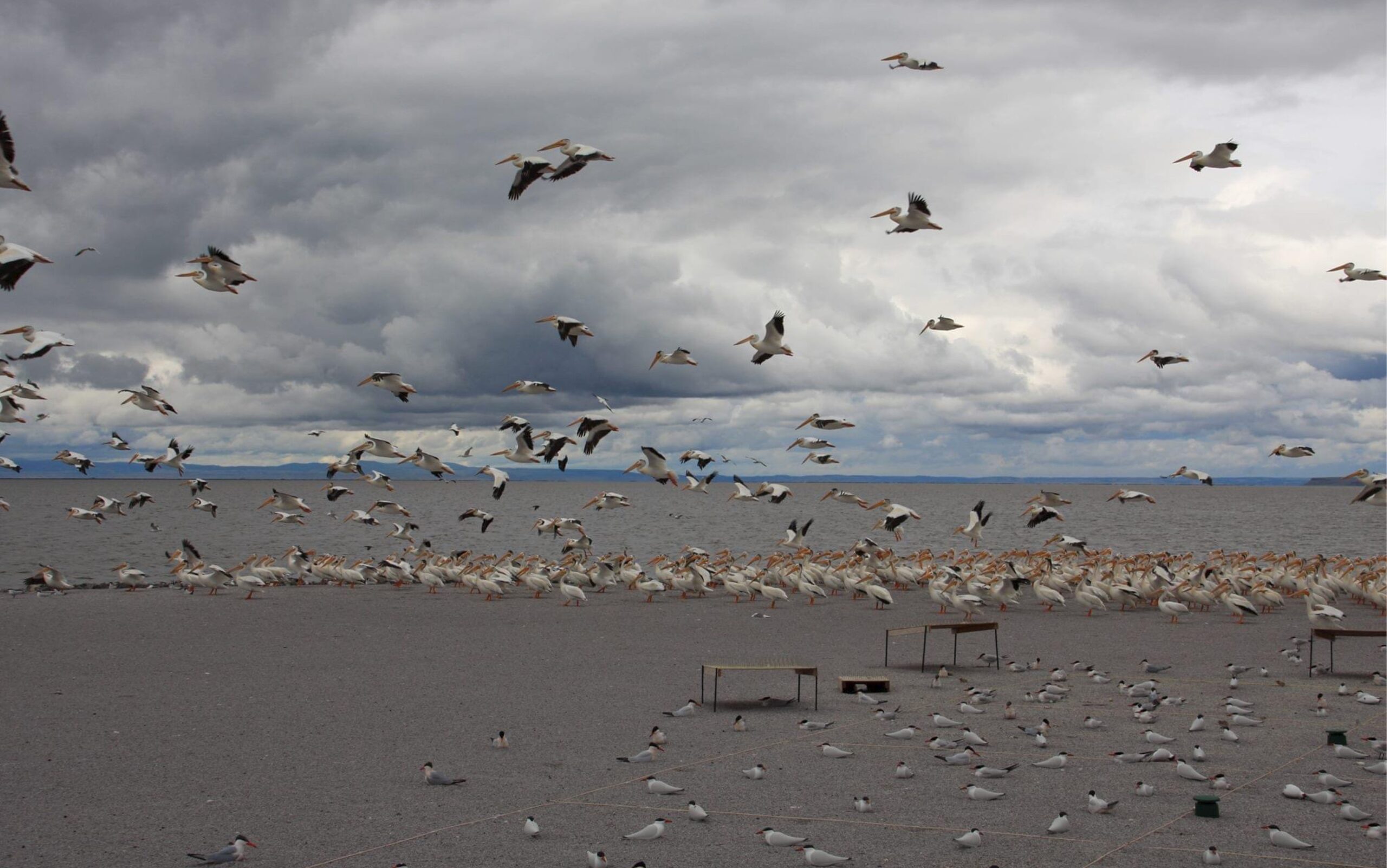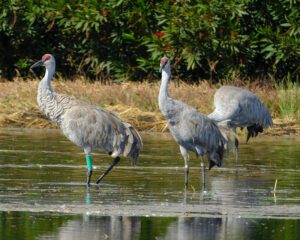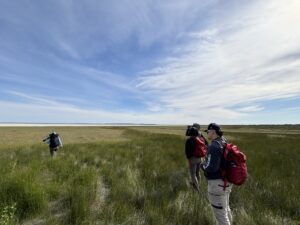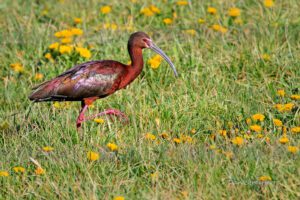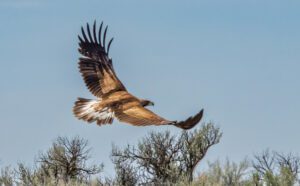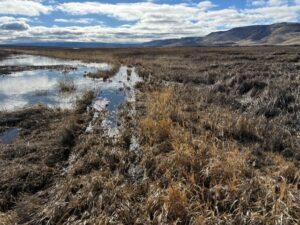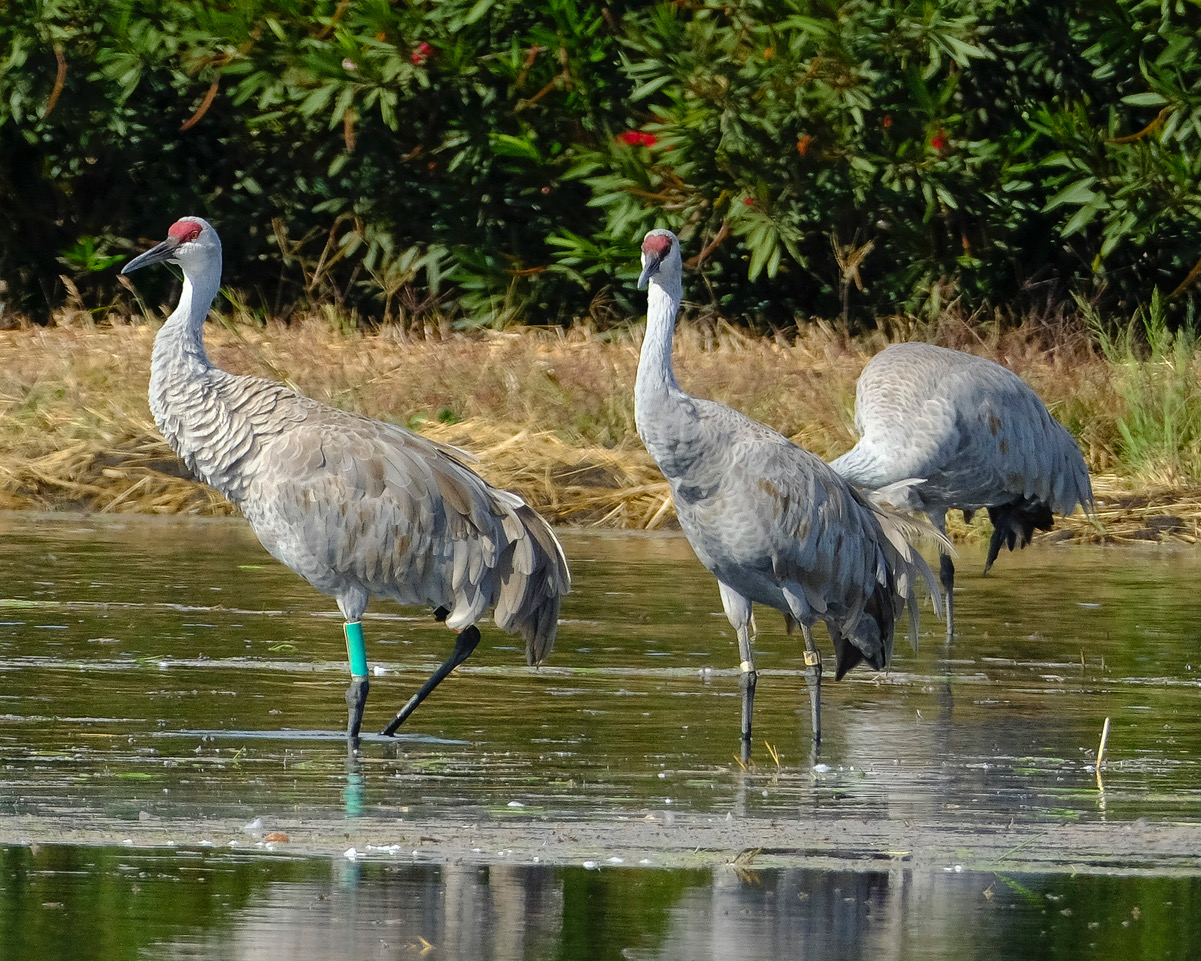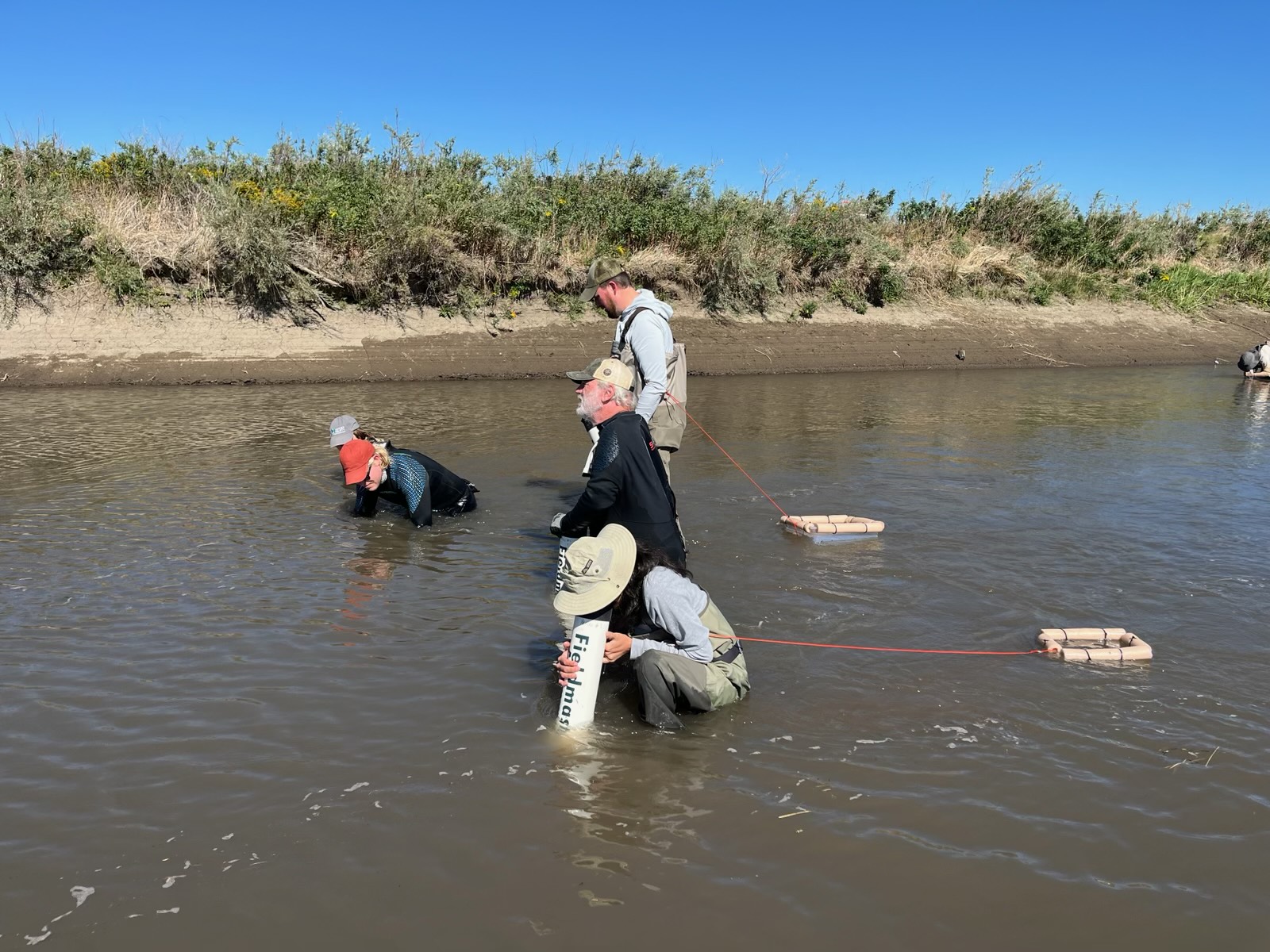Above: Tern Island during the 2013 breeding season with American white pelicans and Caspian terns (photo by Oregon State University and Real Time Research).
Written by Helen Kreuger and Nate Banet, Biologists with Real Time Research
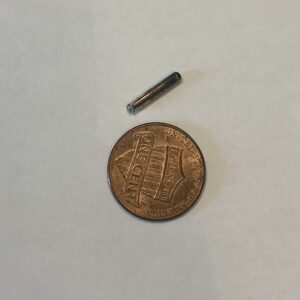
On a brisk and beautifully serene morning in late March, a Real Time Research biologist loaded survey gear in an airboat and was whisked away to Tern Island in the middle of Malheur Lake. The goal of this field outing was to investigate colony connectivity of piscivorous colonial waterbirds in the Pacific Flyway through the detection of fish tags. Every year, a portion of fish in the Northwest are marked (tagged) with passive integrated transponder (PIT) tags, each with a unique code that corresponds to information on fish species, age, tagging site, and release location. These tags are extremely useful in understanding fish movement, survival, and sources of mortality, including predation. If you guessed that some of these PIT-tagged fish are consumed by fish-eating waterbirds and some PIT-tags are later deposited on islands like Tern Island for researchers to detect them, you are correct!
Real Time Research (RTR – Custom Data & Analytics Solutions), a fisheries and wildlife consulting company based in Bend, OR, has a team of experts that specialize in colonial waterbird studies and predator-prey interactions. With detection equipment that looks like a metal detector antenna connected to a tag reader, we scanned Tern Island and occasionally heard a satisfying “beep” from the tag reader, indicating that a fish tag was detected. So where did these fish tags come from and how does it relate to colony connectivity of colonial waterbirds?
While Malheur National Wildlife Refuge has always been an important breeding destination and migration stopover for colonial waterbirds, Tern Island was built in the deepest part of Malheur Lake to provide secure and suitable breeding habitat specifically for Caspian terns. Other fish-easting colonial waterbirds have also utilized Tern Island including American white pelicans, double-crested cormorants, Forster’s terns, California gulls, ring-billed gulls, and even an Arctic tern. As we were about to find out, fish tags deposited at Tern Island show the vast scale and habitats colonial waterbirds utilize throughout their breeding season.
With our field outing complete, we detected over a 100 PIT tags, most from juvenile salmonids originating from the Columbia River Basin, including 55 steelhead trout, 27 Chinook salmon, and 1 sockeye salmon (see figure below). The oldest tag was from 2012 and the most recent tag from 2023. Some of the most interesting detections were from salmonids released as far north as the Okanogan River near the Canadian border and Redfish Lake in Idaho. A number of tags remain a mystery regarding their origin.

Left: Release Sites of PIT-tagged salmonids in the Columbia River basin and location of Tern Island in Malheur National Wildlife Refuge where PIT tags were recovered. Release sites of salmonids do not necessarily indicate where the fish was consumed by colonial waterbirds but show the spatial extent of some salmonid populations throughout the Columbia River basin.
This effort provides insight into critical habitat locations for piscivorous colonial waterbirds in the Pacific Flyway. For more information on the work that Real Time Research does across the Pacific Northwest, please visit www.birdresearchnw.org. This work would not have been possible without the support of Malheur NWR biologists, with a special thank you to Alexa Martinez!

